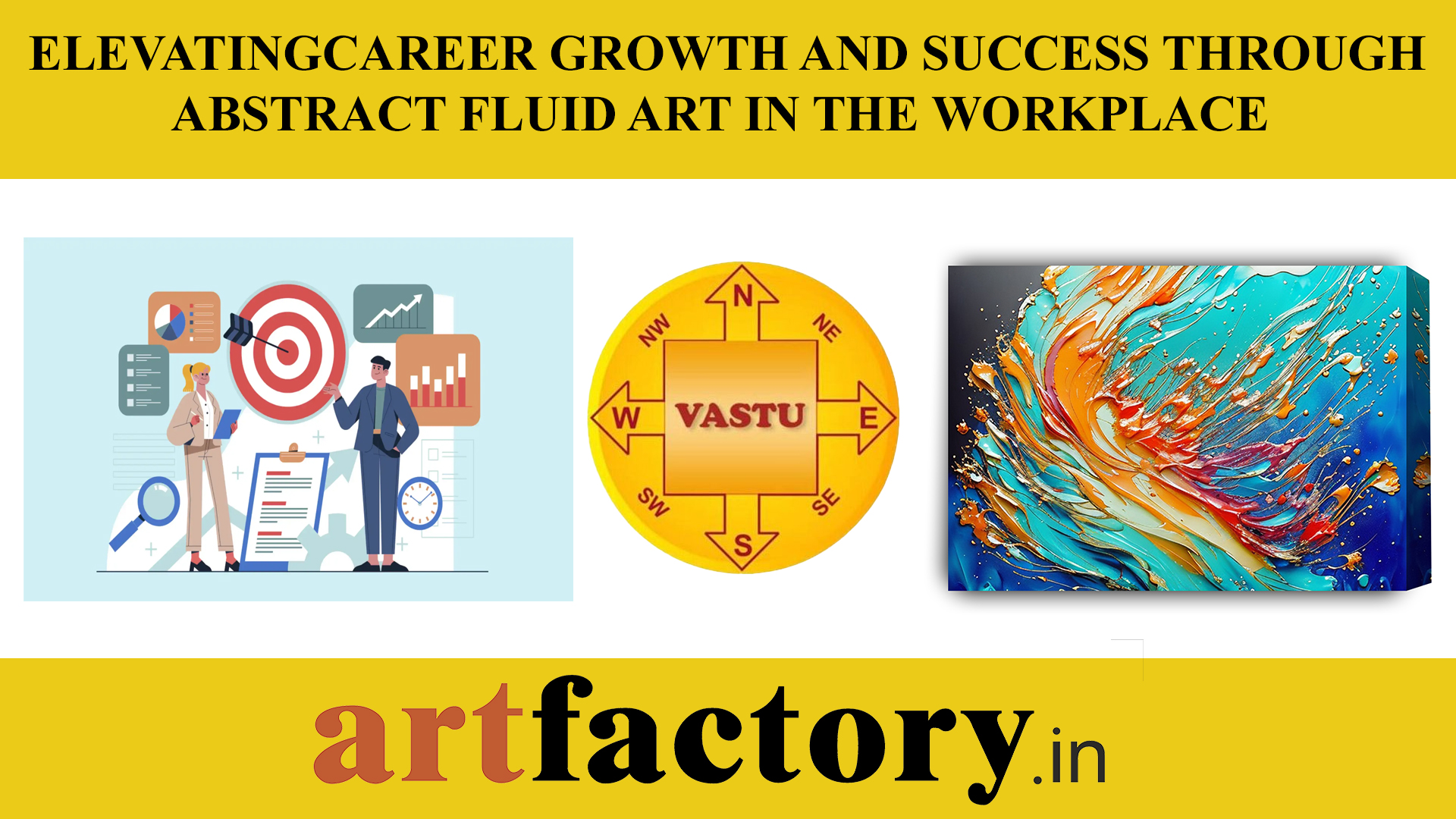
Elevating Career Growth and Success Through Vastu and fengshui
Introduction:
In the dynamic landscape of professional growth, individuals often seek unconventional avenues to enhance their creativity and foster innovation. One such intriguing path involves integrating abstract paintings with fluid and flowing patterns, predominantly in blue and green tones. Drawing inspiration from nature's calming hues, this blog explores how the infusion of abstract art, especially in the north direction, can significantly contribute to personal and professional development.
The Power of Abstract Expression:
Abstract art allows individuals to break free from conventional constraints and tap into their inner creativity. The use of fluid and flowing patterns symbolizes adaptability, a crucial trait in the ever-evolving professional sphere. By embracing abstract expression, professionals can cultivate a mindset that thrives on innovation, resilience, and an openness to change.
Abstract Fluid and flowing patterns in blue and green tones in Vastu -The flowing patterns suggest a seamless journey, highlighting the fluidity of opportunities and the interconnectedness of various paths. The use of blue further signifies trust, confidence, and professionalism. Green tones, associated with growth and prosperity, reinforce the idea of continuous development and the potential for flourishing in one's professional life.
Abstract Fluid and flowing patterns in blue and black in Fengshui - The flowing lines and patterns in abstract paintings symbolize the fluid nature of career paths. Professionals can draw inspiration from the unpredictability of these abstract compositions, encouraging adaptability and openness to new opportunities. Incorporating blue and black tones into the artwork adds a touch of mystery and depth, fostering creativity and aiding in effective problem-solving—a valuable skill set for professional success.
The Magnetic North Direction:
In many cultural and spiritual traditions, the north direction is considered a symbol of stability and progress. By strategically placing above abstract paintings in the north direction of a workspace, individuals aim to align themselves with these positive energies. This positioning is believed to enhance focus, clarity, and the ability to navigate professional challenges with a calm and composed demeanor.
Q: How can abstract paintings with flowing patterns enhance professional growth?A: Abstract paintings stimulate creativity and imagination, providing a visually dynamic backdrop for professional development. The flowing patterns symbolize the fluidity of career paths, encouraging adaptability and openness to new opportunities.
Q: What do blue and black tones in abstract art represent in the context of professional success?A: Blue and black tones in abstract paintings as per fengshui symbolize resilience, depth, and focus. They evoke a sense of mystery, fostering creativity, effective problem-solving, and a composed mindset in the face of challenges.
Q: Why focus on abstract paintings for professional growth? A: Abstract paintings, especially those with fluid patterns, can stimulate creativity and foster a dynamic mindset. They serve as visual inspiration, promoting a conducive environment for problem-solving and innovative thinking, essential for professional growth.
Q: Why the emphasis on blue and green tones? A: In vastu Blue is associated with calmness and productivity, while green symbolizes growth and balance. Combining these tones in abstract art can create a harmonious atmosphere, encouraging a sense of stability and tranquility, which can positively impact professional performance.
Q: How does the North direction play a role in this context? A: In some cultures, the North direction is believed to be associated with career and success. Placing abstract paintings with fluid patterns in blue and green tones in the North direction of your workspace is thought to enhance career prospects and provide a sense of direction in your professional journey.

Comments : (0)